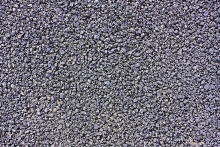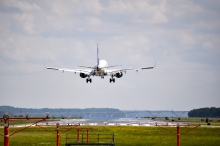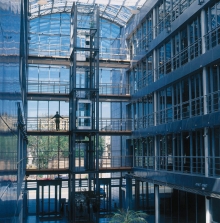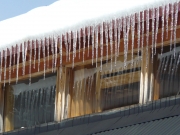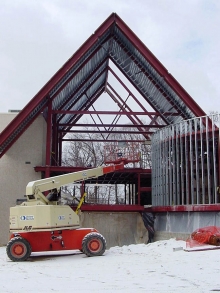- Error
{Re}habitat
Learn how adaptive reuse and upcycling can add hip design to your home, apartment, or yard with the Go Green channel's {Re}habitat series. Follow host Rachael Ranney as she shows you how to repurpose salvaged and found materials, adding fun and function to your space without breaking your budget.

The more lights the better, right? Although lights are visually appealing and, personally, my favorite, the “Christmas Vacation” mentality can lead to a lot of problems if proper precautions are not taken. Christmas lights use a lot of electricity. Improperly installed, they can cause overloaded circuits and wires to overheat. Enough heat could be generated to eventually burn and ignite other items in the area.
(As previously published in Modern Contractor Solutions.) Pervious pavement is a green, sustainable strategy that can assist in lowering stormwater runoff, naturally decreasing automobile pollutants, recharging the water table supply and moderating the heat island effect. Similar to other complex construction systems, in order for the sustainable pavement to perform as it was designed, it needs to be installed with precision and maintained with diligence. To drain water effectively on any given site, different geographical areas require special adjustments to the technology as well.
This is the second article in our series on U.S. infrastructure, following the introductory article. The American Society of Civil Engineers (ASCE) assigned the United States’ AVIATION infrastructure a grade of “D” on their 2009 Report Card for America’s Infrastructure.
In today’s news there’s talk of a new federal government jobs stimulation program, with a cost between $75 billion and $125 billion. This new jobs program would be funded in theory from recaptured amounts totaling nearly $200 billion, originally programmed under the 2008 Troubled Asset Relief Program (TARP).
Approximately $50 billion of the new jobs program would be targeted for U.S. infrastructure projects, i.e., roads, bridges, and water projects. As Buildipedia.com’s U.S. infrastructure watchdog, this particular aspect of the news caught my attention Tuesday.
Eco-friendly inventions now enable elevators to operate with much less energy, use less building square footage by eliminating traditional elevator utility rooms, and incorporate eco-sensitive finish materials. Likewise, green strategies for eco-modernizations are also available to renovate traditional elevators. Yet beyond new green technologies and renovations, an elevator itself is an important green tool.
We have all performed the recommended winter car maintenance to ensure proper operation and have put our summer clothes away for the year. But have we readied our home for the winter as well? Preparing your home for cold winter weather not only contributes to your general comfort, but it can also contribute to keeping money in your pocket.
To maintain a project's schedule, productivity, and ultimately, profitability, it is imperative that the job foreman and the office project manager and/or estimator are aware of weather and site conditions. During this time of the year, material delivery becomes an extremely important part of maintaining project schedules and minimizing surprises.
Specifiers tend to create their products based on what manufacturers tell them. This is not a bad idea; after all, no one has the time to research all the products used on site. Manufacturers will indicate that their materials need to be pre-conditioned to the interior temperature for a period of time, usually 24 hours prior to installation. The standard temperature is typically between 55 degrees Fahrenheit and 70 degrees Fahrenheit.
Computerized maintenance management systems (CMMS) offer many advantages to a broad group of facilities stakeholders at commercial, industrial, medical, and educational institutions throughout the United States.

